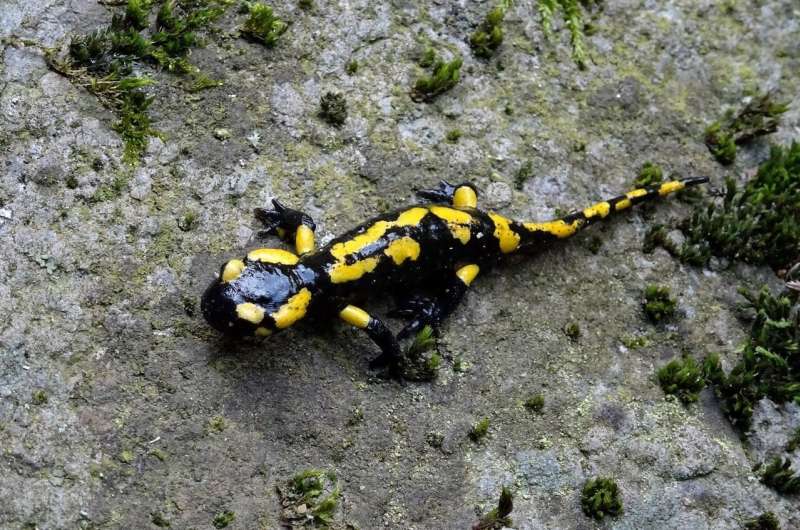

In a study published in the Journal of Wildlife Management, investigators predicted the geographic range restriction of several different species of salamanders in eastern Canada and the United States under future climate scenarios in 2050 and 2070.
The research focused on the spotted salamander, blue-spotted salamander, four-toed salamander, and red-backed salamander. Proportions of habitat expected to remain suitable with continued climate change were 91% for the blue-spotted salamander, 23% for the spotted salamander, 4% for the four-toed salamander, and 61% for the red-backed salamander. Range restriction increased with time and greenhouse gas concentration for the spotted salamander, four-toed salamander, and red-backed salamander.
“Salamanders provide stability to food webs and while the species studied here are relatively common and wide-ranging, climate change will dramatically reduce their ability to persist and in turn, disrupt the functioning of ecosystems across the eastern United States and Canada,” lead author Brian W. Widmer, of Central Michigan University.
Prague zoo claims to have the longest salamander on Earth
Climate change and range restriction of common salamanders in eastern Canada and the United States, Journal of Wildlife Management (2022). DOI: 10.1002/jwmg.22235
Citation:
How will climate change affect the geographic range of salamander species in the U.S. and Canada? (2022, June 8)
retrieved 8 June 2022
from https://phys.org/news/2022-06-climate-affect-geographic-range-salamander.html
This document is subject to copyright. Apart from any fair dealing for the purpose of private study or research, no
part may be reproduced without the written permission. The content is provided for information purposes only.